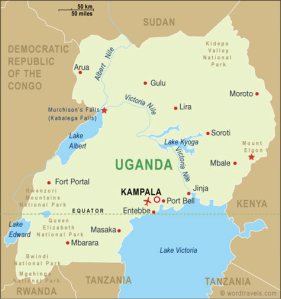A report by Uganda’s Ministry of Water and the Environment says the country will need to import firewood in 2020 if current rates of deforestation and fuelwood consumption are not abated.
Quoting the report, Uganda’s Monitor newspaper says that”with 91 per cent of the total energy used being derived from biomass, which includes firewood and charcoal. The Ministry warns that, the pressure on forests and woodlands could easily wipe out the country’s capacity to provide the resource.”
“At the present rate of deforestation, it is predicted that Uganda is likely to be importing fuel wood by 2020,” says the report, which also notes that over the 15 years from 1990, Uganda’s woodland cover declined from 16.5 per cent to 11.5 per cent of the total land area.
“Over the same period, total forest cover reduced by 27 per cent, according to the report. It adds that some districts have experienced extensive loss of forest cover; for example Mayuge District has lost all of its forests.
Meanwhile, the UNEP’s Africa Environment Outlook report tells us that “non-wood forest products are also used extensively in the sub-region. In Uganda, for example the combined value of medicines, bamboo shoots, wild foods, shea butter, oil, honey, gum arabic, curios, and weaving materials has been estimated at about US$40 million per year (Emerton and Muramira 1999).”
Looks like Uganda might make for a good case study — one that combines intensive reforestation with large-scale conversion to fuel-efficient stoves and alternative biomass fuels.



And where will all the fuelwood be exported from? I don’t know if the Uganda ministry report identifies source countries, but I will bet my bottom dollar that Tanzanian forests will feel the effect of declining fuelwood stocks in Uganda…Uganda should perhaps look to Senegal for a solution, not because the latter boasts an abundance of forests. In fact, the contrary is true. But facing a similar problem two decades ago, the Senegalese government heavily subsidised LPG and LPG stoves and (temporarily, at least) curbed complete forest loss.
You raise a important point, Tuyeni, especially in light of the expected surge in rural-to-urban population forecast for the next decades.
Your mention of Senegal and the subsidy for LPG makes me think of a similar approach implemented in the Dominican Republic several decades ago. The scary part is that the DR seems to already be experiencing logging for charcoal pressure from its impoverished neighbor, Haiti. (See earlier blog on this.)
Thanks for the comment! We’ll try to get a hold of someone in Senegal and/or the D.R. to learn from their experiences.
Tuyeni,
I found the a two pager put out by Uganda’s farmer calling on more vigorous political action by the government to deal with this impending wood and charcoal shortage. Here are the first two graphs and the link to the doc.
http://mail.google.com/mail/?ui=2&view=bsp&ver=1qygpcgurkovy
“In Uganda’s 2008-2009 national budget, only 3.4%
was allocated to the agricultural sector despite that
about 80% of the population work in this sector.
With the related ecological and environmental
consequences of unsustainable production of
charcoal, the promotion of more efficient
techniques and practices is more than urgent.
Pilot project on “Energy Alternative Sources” ”
Best,
Kim
More information about the effect of charcoal/ wood fuel consumption against the forests in Africa.